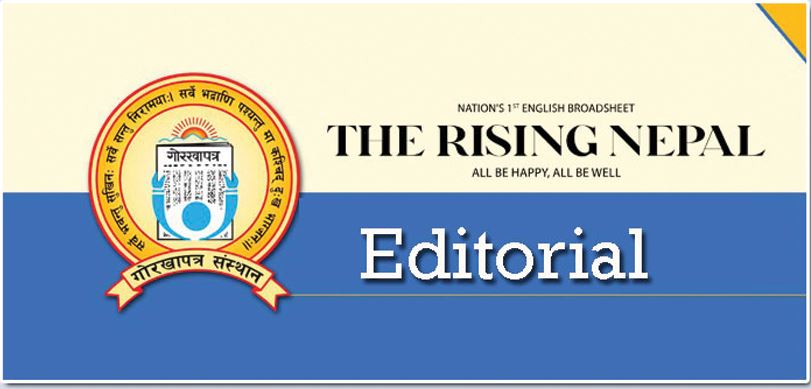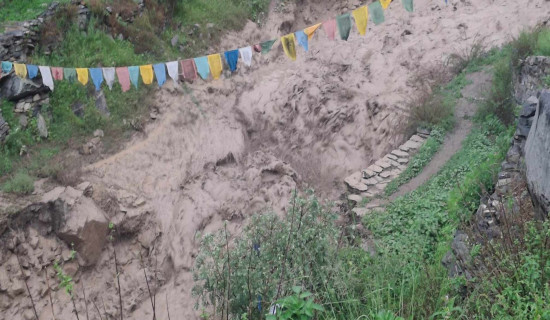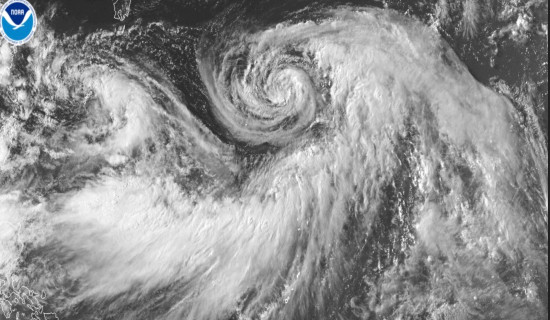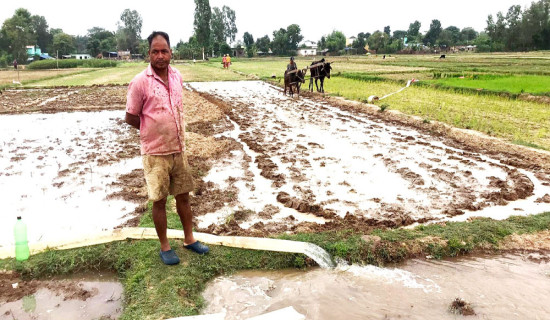- Wednesday, 30 July 2025
Green Climate Fund
Nepal is indeed at the frontline of enduring the consequences of climate change. It is also highly prone to landslides, floods, droughts and other natural hazards. Climate change has ramped up these vulnerabilities by increasing their frequency and intensity. The rapid melting of its glaciers and famed snow-clad mountains are the glaring examples of how climate change is already a harsh daily reality for this nation. As a resource-poor and least developed nation, there has been a global recognition of Nepal, including in UN climate talks such as the Conference of the Parties (COP), that it shouldn't be left in the lurch and that it deserves a climate justice fund to cope with the unfolding challenges.
However, there had always been reluctance on the part of wealthy nations to contribute to this fund, leaving climate-vulnerable countries like us frustrated. But one recent good news has raised the hope that justice will be delivered no matter the daunting obstacles and painful delays: Green Climate Fund (GCF) has recently approved a USD 36.1 million grant to help Nepal address the growing threat of glacial lake outburst floods (GLOFs), a major and accelerating climate risk in the Himalayas. This approval has opened a new chapter in how Nepal prepares for climate threats, shifting from reacting after floods and landslides to their prevention.
The project, to be implemented in partnership with the Department of Hydrology and Meteorology and the United Nations Development Programme (UNDP), is poised to benefit over 2.2 million people living in vulnerable mountain regions. The seven-year project include expanding and upgrading hazard monitoring and early warning systems, reducing water levels in four high-risk glacial lakes, strengthening riverbanks and flood-prone areas through reforestation and protective infrastructure such as check dams and vegetative gabion walls, and helping national and local authorities, first responders and communities to plan and prepare for future risks.
The project is claimed to help protect vulnerable Himalayan communities by strengthening local capacity and safeguarding lives, livelihoods, and infrastructure. By empowering communities and restoring ecosystems, this joint initiative will boost the nation's resilience to GLOFs and climate change-induced calamities. Aimed at establishing a replicable model for climate adaptation in mountainous regions globally, which could be followed by similarly vulnerable countries as well, it is a climate action that is said to be both grounded and game-changing.
The Himalayas are heating up, posing a rising threat not just to Nepal but also to millions living downstream. Glaciers in the Hindu Kush Himalayas are melting faster than ever, swelling glacial lakes and increasing the risk of sudden, destructive floods. With over 2,000 glacial lakes, 21 of which are potentially dangerous, this initiative is sure to go a long way in mitigating this risk and keeping people living there safe. The project is also highly likely to directly contribute to Nepal's adaptation priorities laid out under its National Adaptation Plan (2021-2050) and Nationally Determined Contribution 3.0.
That the project is partnering with the private sector to co-finance hydro-meteorological stations and early warning systems, and also will work with local governments on community–based adaptation initiatives, means that it will yield the expected outcomes. We hope the concerned authorities will work to ensure that the bulk of the funds will go to address the plight of the vulnerable communities rather than be consumed in the bureaucratic procedures.




-square-thumb.jpg)


-square-thumb.jpg)
-square-thumb.jpg)








